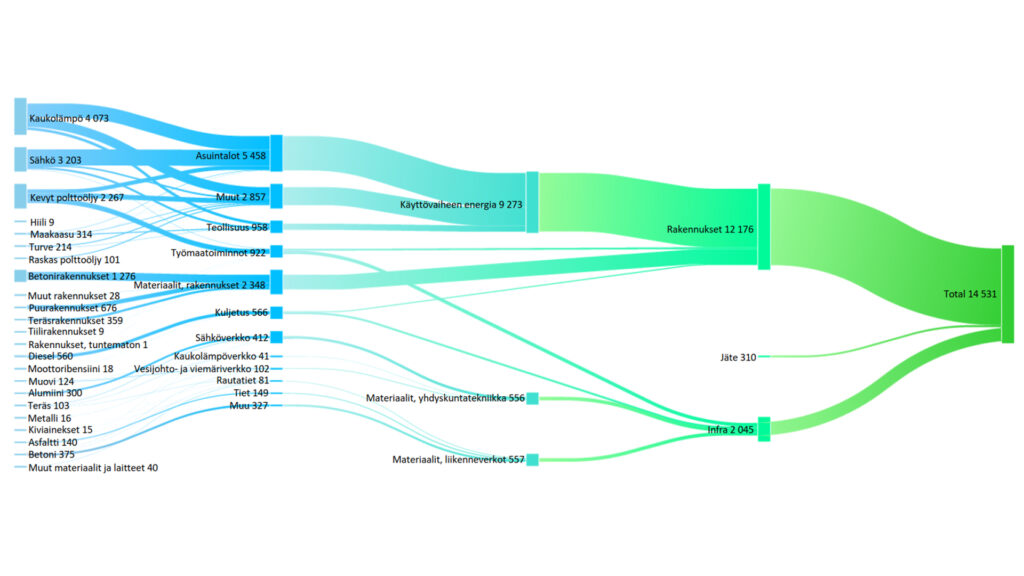The goal of the low-carbon road map is to determine the means to effectively reduce emissions in the built environment and contribute to the achievement of Finland's goal of carbon neutrality by 2035.
As part of the industry-specific road maps ordered by the Finnish government, Rakennusteollisuus RT prepared a road map towards a low-carbon built environment together with its stakeholders in 2019. The "Low-carbon construction industry 2035" road map was completed in 2020. The road map has been updated in accordance with Prime Minister Orpo's government program and published in June 2024.
In the road map work, the annual carbon footprint of the construction industry and the built environment, the means of reducing emissions and their prerequisites were determined for the first time at the level of the whole of Finland. At the same time, scenarios for the future until 2050 were created. The goal was to identify the largest areas of emission reductions, the measures enabling low carbon and the key obstacles.
In the updated carbon footprint calculation, the carbon footprint of Finland's built environment decreased by 15 percent as a whole from 2017 to 2021, when it was approximately 14,5 million tons of CO2e. Included in the calculation are the materials of the construction projects completed in the accounting year and the implemented Site activities, as well as the emissions resulting from the use of the existing built environment. The latest available statistical data have been used in the estimate, which in the updated calculation comes from 2021 and in the original from 2017.

Energy consumption and renewable forms of energy at the center of emission reductions
In the low-carbon roadmap, the most significant area is improving the energy efficiency of the existing building stock and transitioning to low-emission forms of energy as quickly as possible. By far the biggest source of emissions in the built environment is still the energy consumption of buildings during operation, although its share had decreased in the updated calculation to 64 percent.
Renovation that improves energy efficiency is a significant and cost-effective way to reduce emissions. It also extends the life cycle of buildings, which has possible positive effects on biodiversity.
In terms of construction, the focus of low carbon is the emissions of construction activities and building materials. Construction materials account for almost a quarter of the carbon footprint of the entire built environment. Technological developments in cement and steel production will play a significant role in reducing construction emissions in the future.
Essential emission reduction potential in infrastructure construction can be found especially in construction site activities, the regional utilization of aggregates that reduce the need for transportation, and the use of recycled and recycled materials.
Gaia Consulting Oy has been responsible for the implementation of the road map work.
- Final report of the updated roadmap for the low-carbon construction industry 2035
- Release: Emissions from the built environment are decreasing faster than previously estimated
Check out the recording and materials of the announcement seminar
Presentation materials of the public webinar on 11.6.2024 June XNUMX
- Summary of the updated low-carbon roadmap Anna Laine, Gaia (pdf)
- How the EU becomes low-carbon opening speech Pekka Vuorinen, RT (pdf)
- Company example Ulla Leveelahti, Finnsementti (pdf)
- Company example Laura Eklund, Skanska (pdf)
Look in the archive
Elsewhere online
- Roadmap towards low-carbon construction (press release, GAIA)
- Ministry of Labor and the Economy: Low-carbon road maps 2035
- Ministry of the Environment: Roadmap for low-carbon construction